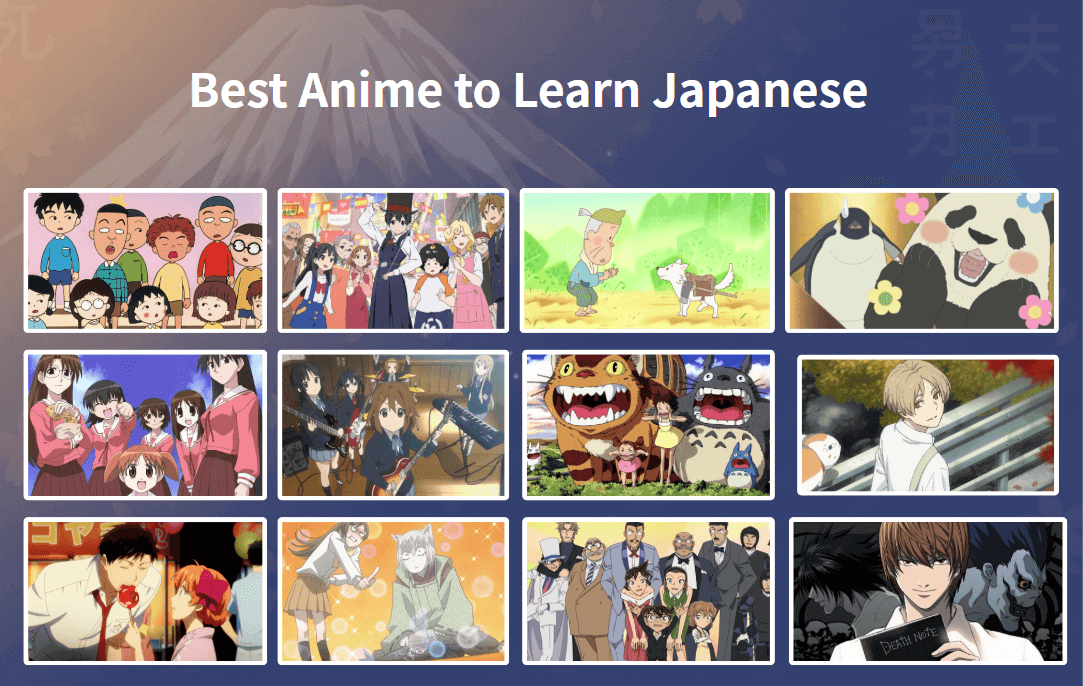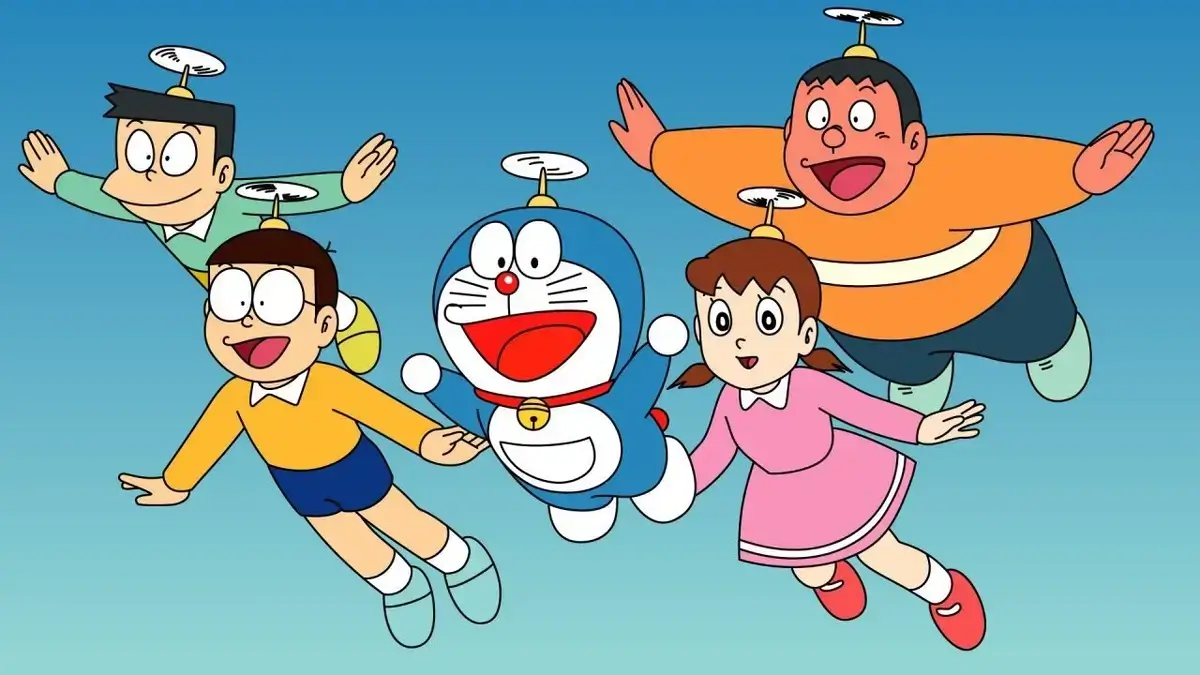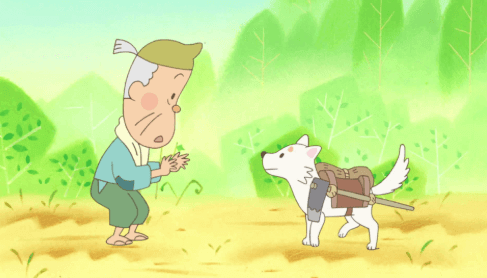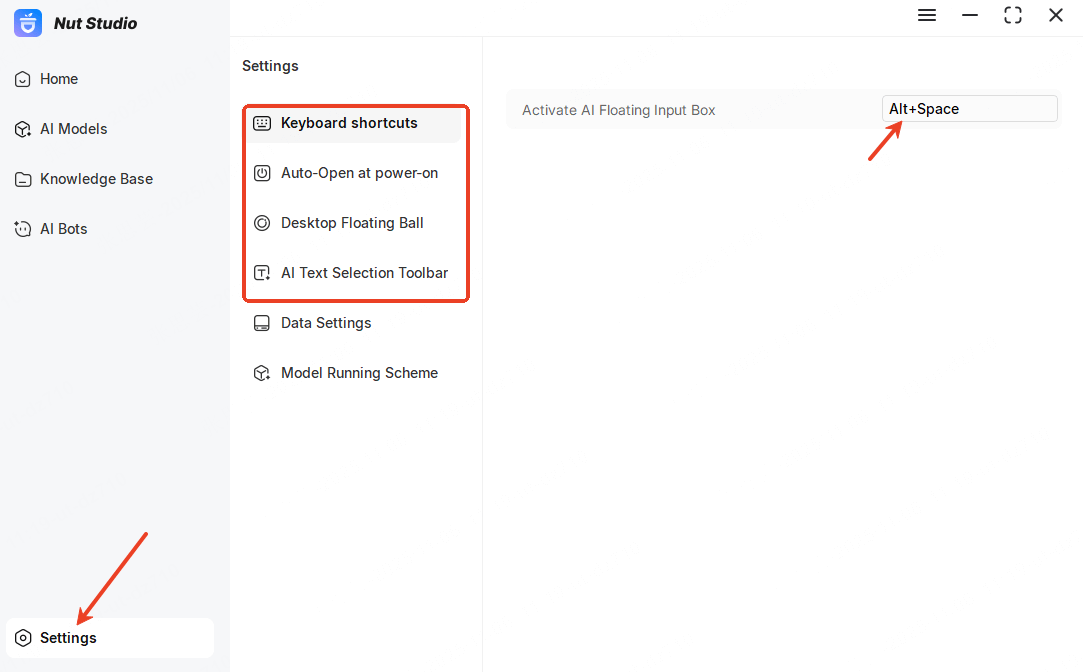
Want to learn Japanese easily? Watching anime is a super fun way. From beginner (N5) to advanced (N1), there are anime suitable for each Japanese level. When you meet unfamiliar words or sentences while watching anime, note them down and study them. This way, you can enjoy the story while accumulating important expressions, maximizing your learning efficiency. This article recommends anime suitable for each level of Japanese proficiency from beginner (N5) to advanced (N1) and introduces how to use a desktop AI assistant to efficiently learn Japanese while watching anime.
CONTENT:
- Why Watch Animes to Learn Japanese?
- 14 Best Animes to Learn Japanese
- 1. Doraemon (ドラえもん) [N5]
- 2. Chibi Maruko-chan (ちびまる子ちゃん) [N5]
- 3. Crayon Shin-chan (クレヨンしんちゃん) [N4]
- 4. Folktales from Japan (ふるさと再生 日本の昔ばなし) [N4]
- 5. Shirokuma Cafe (しろくまカフェ) [N4]
- 6. My Neighbor Totoro (となりのトトロ) [N5]
- 7. Azumanga Daioh (あずまんが大王) [N4]
- 8. K-On! (けいおん!) [N4]
- 9. Natsume's Book of Friends (夏目友人帳) [N3]
- 10. Monthly Girls' Nozaki-kun (月刊少女野崎くん) [N3]
- 11. Detective Conan (名探偵コナン) [N2]
- 12. Kamisama Kiss (神様はじめました) [N2]
- 13. Death Note (デスノート) [N1]
- 14. Monogatari Series (物語シリーズ) [N1]
- How to Learn Japanese While Watching Anime
- FAQs
- Conclusion
Why Watch Animes to Learn Japanese?
Learning Japanese through anime is especially suitable for beginners, regardless of your age. First, it's fun—unlike the tedious process of memorizing vocabulary or studying grammar. Watching anime with a story you enjoy makes it easy to stick with learning the language. Second, the dialogues in anime feature genuine everyday expressions used by Japanese people, with clear pronunciation and natural intonation. Practical expressions like greetings, casual conversation, and ordering food while shopping are easily remembered and help you learn to speak authentically—much easier to understand than the stiff sentences in textbooks. Furthermore, anime recreates Japanese life scenes and cultural customs, helping you understand the context in which expressions are used. Learning becomes effortless and fun, and you gradually develop a natural feel for the Japanese language.
14 Best Animes to Learn Japanese
1 Doraemon (ドラえもん)

The story follows Nobita, an elementary school student, and Doraemon, a robot from the future who helps him solve everyday problems with gadgets from his magic pocket. The dialogue uses only basic, high-frequency words like "mom," "eating," and "going to school." The speech is slow with standard pronunciation, and each episode runs about 10 minutes—perfect for quick learning sessions.
| Features | Details |
|---|---|
| Japanese Level | N5 to N4 |
| Genre/Setting | Sci-Fi, Slice-of-Life, Comedy, Family |
| Type of Japanese | Mostly casual/informal speech used between children |
| Speed & Clarity | Slow to moderate |
| Japanese Subtitles | Variable |
An excellent choice for beginners. You will learn basic conversational patterns, family-related vocabulary, and school life terms.
2 Chibi Maruko-chan (ちびまる子ちゃん)

This centers on elementary schooler Maruko's daily life with her family and classmates—going to school, doing chores, and playing with friends. The dialogue is packed with everyday expressions like "getting up," "doing homework," and "going shopping," delivered at a moderate to slow pace with steady intonation.
| Features | Details |
|---|---|
| Japanese Level | N5 to N4 |
| Genre/Setting | Slice-of-Life, Comedy, Family (Set in 1970s Japan) |
| Type of Japanese | A mix of casual/informal speech |
| Speed & Clarity | Slow to moderate, with exceptional clarity |
| Japanese Subtitles | Variable |
This is arguably one of the best anime to start with. The situations are mundane and relatable, so the vocabulary is immediately useful.
3 Tamako Market (たまこまーけっと)

Set in the lively Usagiyama Shopping Street, Tamako Market follows the daily life of its cheerful protagonist, Tamako. The series is filled with heartwarming interactions as Tamako and her friends mind the family mochi shop, share snacks, and prepare for local festivals. The dialogue feels exceptionally natural and relatable, largely because it focuses on simple, everyday conversations. You'll frequently hear practical, recurring phrases such as 「これいくらですか」 (Kore ikura desu ka? - How much is this?) and 「一緒に食べませんか」 (Issho ni tabemasen ka? - Shall we eat together?). Because these expressions are easy to grasp and appear often, Tamako Market is a perfect choice for beginners looking to learn authentic, conversational Japanese in a fun and engaging way.
| Features | Details |
|---|---|
| Japanese Level | N5 to N4 |
| Genre/Setting | Slice of Life, Comedy / Shopping Arcade |
| Type of Japanese | Daily Conversational, Standard Japanese |
| Speed & Clarity | The dialogue is spoken at a natural, easy-to-follow pace with excellent clarity |
| Japanese Subtitles | Often available on streaming platforms |
This anime is a fantastic resource for learning vocabulary related to daily life, community, food (especially traditional sweets like mochi), and shopping.
4 Folktales from Japan (ふるさと再生 日本の昔ばなし)

This show brings classic Japanese folktales to life, the beloved stories that children in Japan grow up hearing. Each simple tale teaches a lesson about kindness, honesty, or respect for nature, and often features talking animals, spirits (yokai), and gods. The clear, storybook-style narration makes it easy for anyone to follow along and enjoy.
| Features | Details |
|---|---|
| Japanese Level | N5 to N4 |
| Genre/Setting | Folktales, Cultural, Historical |
| Type of Japanese | Primarily driven by a narrator who speaks in a very clear, standard, and slightly formal "storybook" style of Japanese |
| Speed & Clarity | Slow to moderate |
| Japanese Subtitles | Available on Crunchyroll in many regions |
This is a phenomenal resource for two reasons. First, the language is pristine and easy to understand. Second, you will learn the famous stories that every Japanese person knows, giving you a deep cultural insight that goes beyond typical anime.
5 Shirokuma Cafe (Polar Bear Cafe)

A lighthearted story about a polar bear running a cafe with animal customers including pandas and penguins. The dialogue is simple and repetitive, featuring high-frequency expressions like "I want...", "How much?", and "Where to?" You'll also encounter lots of onomatopoeia like "kippari" (quickly).
| Features | Details |
|---|---|
| Japanese Level | N4 to N3 |
| Genre/Setting | Slice-of-Life, Comedy, "Iyashikei" (healing type) |
| Type of Japanese | A great mix of casual and polite (丁重語, teineigo) Japanese |
| Speed & Clarity | Moderate speed and very high clarity |
| Japanese Subtitles | Variable. Available on some streaming services like Crunchyroll in certain regions, and on Japanese physical media |
Perfect for N4 learners looking to bridge the gap to N3. You'll learn conversational Japanese used between adults in a relaxed social setting.
6 My Neighbor Totoro (Tonari no Totoro)

This classic Miyazaki film follows two sisters who move to the countryside and encounter the mysterious forest creature Totoro. The language is standard and beautiful with clear pronunciation—no slang or dialects. The natural, fluent dialogue introduces Japanese rural culture alongside standard pronunciation.
| Features | Details |
|---|---|
| Japanese Level | N4 |
| Genre/Setting | Fantasy, Slice-of-Life, Family |
| Type of Japanese | Simple, natural, everyday conversational Japanese. |
| Speed & Clarity | Slow to moderate. |
| Japanese Subtitles | Almost always available on official DVD/Blu-ray releases. |
A fantastic resource. As a film, it's a manageable length. The language is pure, natural, and free of complex slang or jargon, making it an ideal study tool for understanding real-life conversation.
7 Azumanga Daioh (あずまんが大王)

Set in a high school, this follows the humorous daily lives of girls with different personalities through classes, club activities, and after-school fun. The moderate speech pace and clear articulation feature school slang like "class," "homework," and "clubs," bridging the gap between basic and intermediate levels.
| Features | Details |
|---|---|
| Japanese Level | N4 to N3 |
| Genre/Setting | Slice-of-Life, School Comedy, 4-koma adaptation |
| Type of Japanese | Casual/informal high school speech |
| Speed & Clarity | Moderate to fast |
| Japanese Subtitles | Variable |
A good challenge for a high-N4 or new-N3 learner. It will expose you to more realistic, fast-paced teenage conversation and regional dialects. The humor is often situational and easy to grasp even if you miss a few words.
8 K-On! (けいおん!)

High school girls form a light music club, practicing instruments and performing while navigating school life. The natural-paced dialogue includes campus slang and music vocabulary like "guitar," "practice," and "performance," capturing authentic youth speech patterns and humor.
| Features | Details |
|---|---|
| Japanese Level | N3 |
| Genre/Setting | Slice-of-Life, School Comedy, Music |
| Type of Japanese | Very natural, casual, and informal high school girl speech |
| Speed & Clarity | Moderate to fast |
| Japanese Subtitles | Variable |
An excellent show for immersing yourself in the way young Japanese people actually talk to their close friends. It's a fun watch that's great for tuning your ear to natural conversational flow.
9 Natsume's Book of Friends (夏目友人帳)

Natsume can see spirits and inherits his grandmother's "Book of Friends," returning spirits' names in this heartwarming series. The moderate speech pace features delicate emotional expressions like "thank you," "I'm sorry," and "I want to..." alongside traditional cultural vocabulary.
| Features | Details |
|---|---|
| Japanese Level | N3 (with some N2/N1 elements) |
| Genre/Setting | Supernatural, Slice-of-Life, Drama, "Iyashikei" |
| Type of Japanese | A blend of modern, standard Japanese (Natsume's daily life) and more archaic, formal, or specialized language used by the yōkai (spirits) |
| Speed & Clarity | Generally slow to moderate. It's a very atmospheric and calm show, so dialogue is rarely rushed. Clarity is excellent |
| Japanese Subtitles | Variable |
A beautiful series for learning more nuanced and emotional language. The contrast between the human world and the spirit world provides a great opportunity to hear different registers and styles of Japanese in a single show.
10 Monthly Girls' Nozaki-kun (月刊少女野崎くん)

Sakura Chiyo discovers her crush Nozaki Umetarou is a shoujo manga artist, leading to hilarious collaborative adventures. The moderate-paced dialogue uses school and romance expressions like "like", "date", and "play together" in natural, authentic ways.
| Features | Details |
|---|---|
| Japanese Level | N3 |
| Genre/Setting | School Comedy, Romance, Parody |
| Type of Japanese | Primarily casual high school speech, but with a significant amount of vocabulary related to the manga industry |
| Speed & Clarity | Moderate to fast, driven by comedic timing |
| Japanese Subtitles | Variable |
Great for N3 learners. It will challenge you with its specific vocabulary but reward you with great comedy. It's a good test of whether you can follow a conversation even when you don't know every single word.
11 Detective Conan (名探偵コナン)

Conan solves cases while posing as an elementary student, with investigations spanning Japanese geography and culture. The dialogue includes deduction vocabulary like "evidence", "suspect" and "deduction" with moderate speech speed and clear logic that builds complex sentence structures.
| Features | Details |
|---|---|
| Japanese Level | N2 to N1 |
| Genre/Setting | Mystery, Crime, Detective Fiction |
| Type of Japanese | A very wide range. Conan (Shinichi) uses highly logical, deductive language with a vast and specialized vocabulary related to crime, forensics, police procedure, and science. |
| Speed & Clarity | Varies. Everyday conversations are simpler (N3 level), but the mystery-solving is N2 and above |
| Japanese Subtitles | Variable |
An excellent long-term project for an advanced learner. You will learn an incredible amount of specific, high-level vocabulary. It's challenging but very rewarding for those interested in mystery fiction.
12 Kamisama Kiss (神様はじめました)

Ordinary girl Nanami becomes a shrine owner and develops a fantastical romance with fox spirit Tomoe. The natural dialogue blends everyday expressions with traditional cultural vocabulary like "shrine," "yokai," and "blessing," rich in emotional expression.
| Features | Details |
|---|---|
| Japanese Level | N2 |
| Genre/Setting | Romantic Comedy, Supernatural, Fantasy (Shōjo) |
| Type of Japanese | A mix of modern, casual high school slang from the protagonist, Nanami, and more formal, sometimes archaic Japanese from the supernatural beings like Tomoe. |
| Speed & Clarity | Moderate. The dialogue is generally clear, but the vocabulary and grammar used by the spirits can be challenging and require N2-level knowledge of formal structures and historical context |
| Japanese Subtitles | Variable |
Great for learners who want to understand the different politeness levels and registers of Japanese. You get modern slang and ancient formal speech in the same conversation, which is a great learning opportunity.
13 Death Note (デスノート)

Genius Light Yagami obtains the "Death Note" and battles detective L in a high-IQ psychological war. The fast-paced dialogue is logically rigorous, packed with advanced vocabulary and complex structures like "logic," "justice," and "argumentation."
| Features | Details |
|---|---|
| Japanese Level | N1 |
| Genre/Setting | Psychological Thriller, Supernatural, Mystery |
| Type of Japanese | Complex, abstract, and philosophical |
| Speed & Clarity | Moderate to very fast. The "mind battles" involve rapid-fire delivery of complex thoughts, which is extremely challenging to follow in real-time without subtitles |
| Japanese Subtitles | Variable |
This is a benchmark for advanced listening comprehension. If you can follow the internal monologues of Light and L without subtitles, your Japanese listening skills are at a very high level. The vocabulary covers psychology, law, strategy, and morality.
14 Monogatari Series (物語シリーズ)

High schooler Araragi Koyomi encounters various yokai in this series filled with witty, humorous dialogue full of puns and wordplay. The fast-paced speech demonstrates quick thinking with clever vocabulary, advanced expressions, and rhetorical devices.
| Features | Details |
|---|---|
| Japanese Level | N1 and beyond |
| Genre/Setting | Supernatural, Mystery, Psychological, Romance |
| Type of Japanese | Extremely stylized, rapid-fire, and literature-heavy |
| Speed & Clarity | Extremely fast |
| Japanese Subtitles | Variable |
This is one of the most difficult series in all of anime for a language learner. It is a significant challenge even for many native speakers. It's best reserved for very advanced learners looking for a final boss in listening practice.
How to Learn Japanese While Watching Anime
While watching anime, you might need a little extra help to catch unfamiliar words or grammar. If you're looking for a smoother learning experience, tools like the Nut Studio desktop app can support your anime study sessions without interrupting the flow. It's a desktop AI assistant that provides comprehensive support as you learn Japanese through anime. It not only helps you overcome language barriers but also assists you in systematic learning.
Instant translations: Simply highlight any subtitle while watching—words like "大丈夫" or "萌え"—and get immediate translations and explanations without pausing or switching to a dictionary.
Grammar support: Get detailed breakdowns of sentence structures and grammar points as they appear in your favorite shows, helping you understand not just what characters say, but why.
Personalized guidance: AI can suggest a learning path based on your current level (N5 to N1) and recommend which anime might work best for you right now.
How to Get Started
Step 1: Download Nut Studio for your operating system from the official website. We currently support Windows, with Mac support coming soon.

Step 2: Enable features like "Shortcuts", "Desktop Floating Ball" and "AI Text Selection" in settings. This will help you to get instant use of AI assistant.

Step 3: Just pick an anime at your level—beginners might start with Doraemon—and watch as usual. When you encounter new words or phrases, highlight them directly in the subtitles for instant help. Keep notes of what you learn and review regularly.

The key is finding what works for you. Whether you use AI tools, traditional dictionaries, or just rewatch episodes, the most important thing is consistent practice and enjoying the journey!
FAQs
Is it possible to learn Japanese at 25?
Absolutely! Age 25 is great for learning Japanese. Adults often learn faster because of better focus and discipline. Many successful learners start in their 20s, 30s, or even later. Your motivation matters more than your age!
What is the best anime to learn Japanese?
It depends on your level, beginners should start with Doraemon or Chibi Maruko-chan for simple dialogue. For intermediate learners, try K-On! or Natsume's Book of Friends.
Is 2 years enough to be fluent in Japanese?
Within two years of consistent, focused study, you can reach a strong conversational level (the N3/N2 equivalent) and handle most daily situations! You can cut that time significantly to learn a language with modern AI tools.
How to learn a new language by watching TV?
Use subtitles in the target language, not English. Pause and repeat phrases aloud. Watch episodes multiple times, focusing on common expressions, and practice speaking what you hear daily. Easily take notes anytime using Nut Studio without switching software, making your learning process smoother.
Conclusion
Learning Japanese through anime makes studying feel less like work and more like fun! Start at your level, watch consistently, and don't rush. Take AI tools to help you practice memery and get instant feedback between episodes. Most importantly, enjoy the process—every anime you watch brings you closer to fluency.
-
45+ Roleplay Prompts for ChatGPT & LLMs: Fantasy, Romantic and Fun
Discover 45+ ChatGPT roleplay prompts! From Fantasy, Romantic to Fun character ideas, try these creative AI character scenarios for fun conversations.
10 mins read -
20 Things You Should Never Tell ChatGPT
Stop letting ChatGPT waste your time. Discover 20 things that AI kill your focus and efficiency, while also learning the essential security rules to work safely.
10 mins read -
Best ChatGPT Prompts for Academic Writing in 2025 [Templates Included]
Discover best ChatGPT prompts for academic writing. Get templates for each step that actually work. Test locally with Nut Studio.
10 mins read -
Best LLMs for Resume Writing: Cloud vs. Local[2025 Tested]
Unbiased 2025 review of the best LLMs for resume writing—Claude 4, Gemini 2.5 Pro, GPT-5, Llama 3.2, Mistral, Phi-4—plus prompts, advanced LLM tips, and local setup.
5 mins read -
Best NotebookLM Alternatives[2025]: From Cloud to Open-Source Options
Discover powerful NotebookLM cloud alternatives and offline. Compare features, privacy, and ease of use. Find the perfect local AI tool for your research needs.
10 mins read -
Best AnythingLLM Alternatives: A Guide to Local LLMs
Find the best AnythingLLM alternatives to chat with your documents. Compare top local LLM tools like Nut Studio, Ollama, and Google's NotebookLM to choose the one that fits your needs.
5 mins read
 Nut Studio
Nut Studio












Was this page helpful?
Thanks for your rating
Rated successfully!
You have already rated this article, please do not repeat scoring!